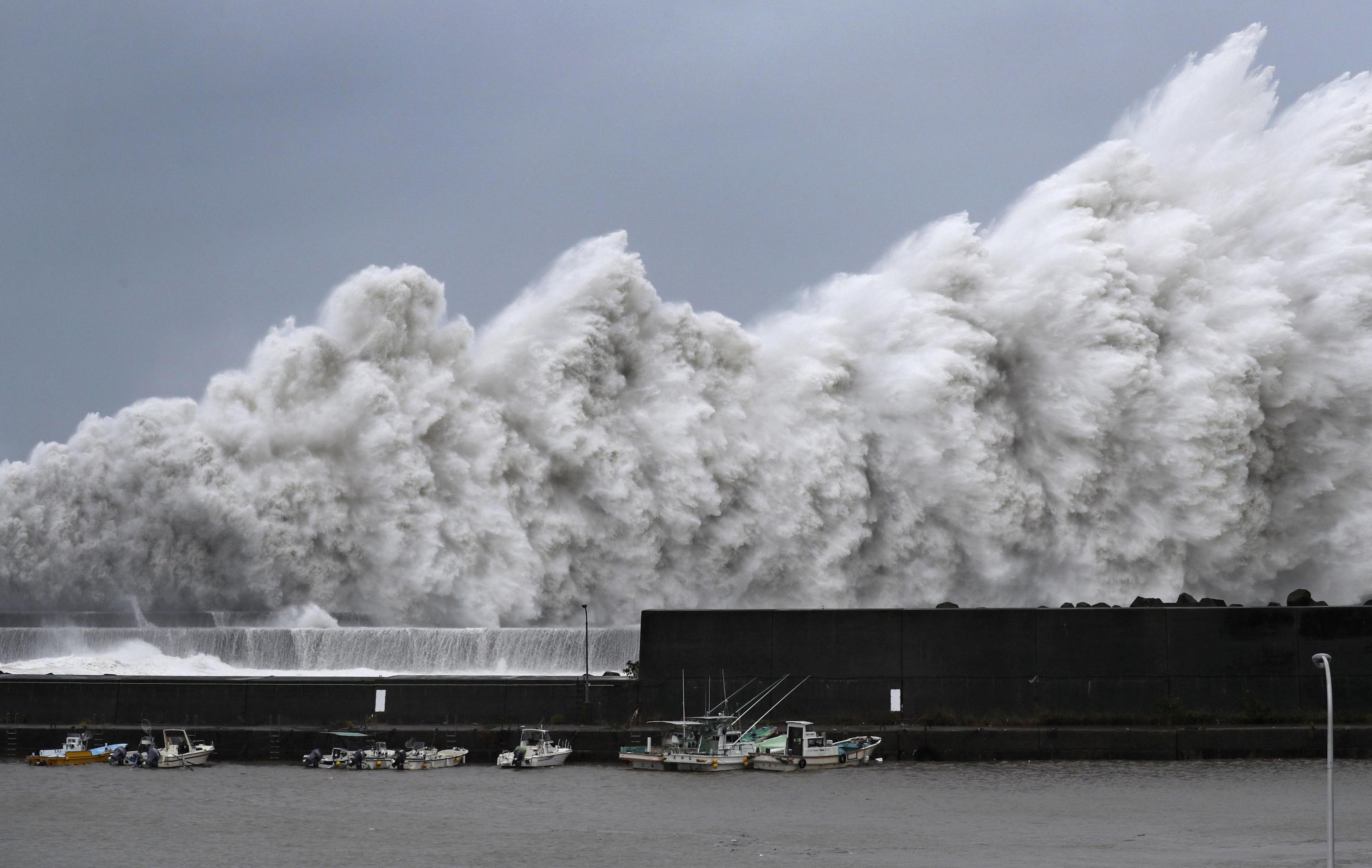At least two people have been killed by Typhoon Mangkhut, known locally as Ompong, which slammed into the Philippines in the early hours of Saturday, bringing ferocious gale-force winds and pounding rains.
Both victims were women, killed when a rain-drenched hillside collapsed on them, according to AFP.
Mangkhut is the strongest storm anywhere on the planet in 2018 so far, carrying gusts of up to 325 kilometers per hour before it made landfall in Cagayan province, on the northern tip of Luzon, at about 1:40 a.m. local time.
When it crossed land, Mangkhut was packing winds of up to 270 km/h, 120 kph stronger than Hurricane Florence that hit North Carolina, and aid agencies warn millions are at risk from rising flood waters and landslides.
Ricardo Jalad, executive director of the Philippines National Disaster Risk Reduction and Management Council, told CNN that the casualties were rescue workers and that there had been 51 landslides across the region as a result of the storm which is now pounding the Philippines with heavy rain.
The death toll is expected to rise in the Philippines as Mangkhut leaves a wake of destruction and landslides.
The Philippines military is sending two C-130 airplanes and 10 helicopters to Cagayan province for typhoon relief and rescue efforts, Defense Secretary Delfin Lorenzana said Saturday, according to Philippine News Agency.
They were to fly from metro Manila once the weather improves, Lorenzana said, carrying aid and allowing rescuers to access remote areas of the mountainous north.
Earlier, in the provincial capital Tuguegarao, strong winds lashed buildings, pulling off entire roofs and throwing large chunks of debris into the air.
Governor of Cagayan Manuel Maamba said emergency services are clearing debris from main roads. Power and communication lines are also down, making it hard to contact more remote areas and assess damage.
Tuguegarao airport in northern Luzon, a vital transportation hub, has also been damaged, potentially complicating efforts to bring in humanitarian aid.
The Philippines Red Cross said waters were rising in parts of Tuguegarao. Video on social media showed people in the city wading through ankle deep water, amid torrential rains.
Many of those in Northern Luzon live in isolated farming communities. There are fears the typhoon could lead to flash flooding in more rural areas, triggering landslides.
Millions Affected
An estimated 5.2 million people in the Philippines were within 125 kilometers of the projected path of the Super Typhoon, according to the National Disaster Risk Reduction and Management Council.
The scale of the typhoon could be felt in the Philippines capital Manila, more than 340 km from the eye of the storm, where heavy overnight rains have led to widespread flooding in urban areas.
Mangkhut’s eye is now over water in the South China Sea and making its way toward Hong Kong and southern China.
The latest information from the Joint Typhoon Warning Center has Mangkhut with sustained winds of 195 km/h with gusts near 240 km/h.
The forecast track has the storm expected to pass around 150 km south of Hong Kong as it moves to the northwest with typhoon-force winds.
Heavy rain and winds were expected in Hong Kong during the morning hours, picking up in intensity through early afternoon and not tapering off until early Monday morning.
Typhoon Mangkhut will make another landfall on Sunday night in the Chinese province of Guandong near the cities of Yangjiang and Zhanjiang.
From there the system will continue to move westward and will rain itself out over northern Vietnam, which could lead to some flooding there early next week.


